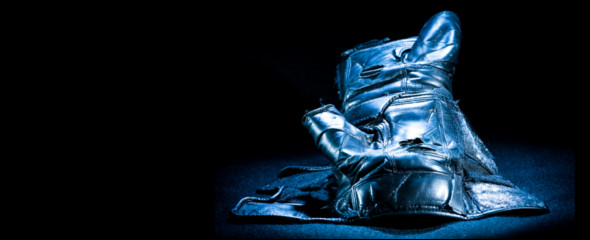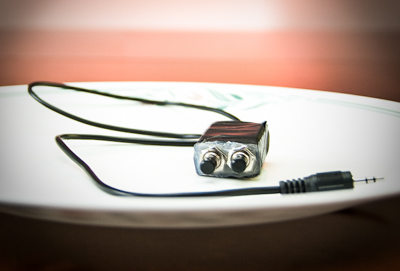Finding Satisfaction Through Photography
 By Guest Blogger Jay Scott
By Guest Blogger Jay Scott
Ever since I saw my Uncle Fred’s skillful photography, showing that it can be an art, not just a tool to help preserve memories, I was interested in it. When I was younger I never had the opportunity to pursue photography, camera, lenses, film and developing being outside my budget and financial priorities, until the digital camera age took hold. As with many things faced by quadriplegics, the challenge was in finding a digital camera that I could use with my paralyzed hands. With wedding gift money in hand, my new wife and I set out to find that camera. It ended up being a 4 megapixel Fujifilm S5100, purchased mainly because of the contoured rubber grip that made holding the camera possible for me.
Initially, I was simply happy to have found a camera I could use effectively. I was told that I had a good eye which motivated me to pursue photography further. I began reading everything I could find for free online, moved from shooting everything in our condo, and the sunsets visible from our balcony, to scenery and skies around Saskatoon. This was one of the best motivations I’ve had since my injury to get out and exercise. It may not be vigorous cardio, but it does motivate me to get to more difficult places to get the angles one cannot get from the main path.
As my education in proper use of the camera, and about what makes for a stronger photo, grew I began to realize two things. The first was that truly outstanding photos of scenery are from places that are inaccessible, even to the most determined photographer with a mobility disability, and at times of day often difficult for me to be present for. Waterfront photos, where the optimum angle was low to the ground and included a foreground element before a vast body of blue, always seem to have jagged rocks or soft sand between me and that shot. A nice angle for almost any photo in a Saskatchewan winter was almost impossible with anything but the most thorough snow clearing, and even then we’re still stuck on the same old path or sidewalk. However, later winter sunrises and earlier sunsets do make it easier to be there for those golden light hours, if I can find a nice angle from the warmth of my van.
My second realization was that I had reached the limits of our camera and would need to upgrade. The research began again and I chose a DSLR, an Olympus E-510, based on my need for live view (seeing on the screen what the camera was seeing, which was very new to the DSLR market at that time) because of my frequent reliance on a tripod. It was difficult for me to lean over to look through the viewfinder of a camera mounted on a tripod. Unfortunately, I discovered that the E-510 model would not work because of the camera’s lack of grip so I sacrificed the live view function and purchased a Pentax K10D which had a grip similar to our Fujifilm. Unfortunately, with the additional weight of the camera and the heavier lens, my old method of holding the camera was now ineffective. I had to adapt and did.
Because of that need to change I am now no longer dependent on a tripod, or any other adaptations, for anything other than the circumstances that anyone would need one, such as night photography or self portraits. Adaptations are wonderful if they enable a person to do something they cannot do without, but can become a burden or barrier of their own. Case in point, depending upon a specific camera, modification or adaptation may mean when the time to upgrade arrives, the adaptation might not work with the new model.

This is exactly what happened with the auto-focus oral shutter release I designed and built for the K10D. It allowed me to trigger the AF and the shutter with my tongue and to hold the camera with both hands, whereas in the past one hand was dedicated to the shutter button. The shutter release made difficult angles much easier to get. The full build can be found on diyphotography.net. When I upgraded cameras the 3.5mm headphone jack no longer fit the shutter release jack on my new camera, as I switched to a pro Nikon model. It would be easy to swap the ends, but I decided to eliminate one more adaptation, knowing my invention was there if I needed it. I should add that again it was a heavier camera with heavier lenses which only helped me to gain strength from using it.
Realizing my passion for photography, and the pleasure of photographing nature in order to share with people beautiful things, but also realizing my limitations, helped to guide me in the direction I am heading now. Passion can be a strong motivator and driving force but when a person, disabled or able-bodied, faces weaknesses or impassable barriers it may be wiser to step back, turn your attention to those things you are best at, and watch the passion grow for something where you practice and improve your greatest skills and abilities.
I still enjoy landscape photography but to truly make a body of outstanding photos requires travel to distant places, being able to be present for the golden hours, and the mobility to get to those places for the angles that create the strongest photos. Travel can be challenging and costly, to have help to be up well before dawn is not impossible but adds to the challenge. As for getting to the location that will help your photo stand above the thousands already made of that one landscape by other people, even with assistance, is often an impossibility. This is where landscapes and scenery had to be moved from my serious work to my recreation and exercise motivation.
I have always enjoyed still life photography including living things, such as flora. But it extends to food, inanimate objects, and everyday things. With the greater control of the factors in much still life photography, and my growing skill set, I decided to begin a photo project with the intent of helping my peers, namely quadriplegics. The project began with photographing and writing descriptions of barriers we face, the technology or adaptations that allow us to overcome those barriers, achieve greater independence and to survive. I hope to attract both able-bodied people, for the purposes or informing them a bit more about our struggles and abilities, as well as to attract people with disabilities who I hope will benefit from my experiences. I began shooting over three years ago, launched the site May 1, 2013 with weekly posts, and have called it Challenging Reality.
It is free for all to access and has begun with the what I know best as a quadriplegic. I have already had multiple contributions from my peers and am open to future expansion to other disabilities and the barriers and needs specific to those. Many of the photos made have enabled me to stay home on -35C/-31F days and complete a piece while others have been a significant physical effort around the city. As my list of subjects remaining to photograph shrinks, I’m more strongly encouraging suggestions and contributions from others.
Challenging Reality has helped me to find satisfaction through my photography by fulfilling my desire to help my peers, passively lobby for greater accessibility by bringing inadequacies to light, increase my physical activity, all the while keeping my mind and body active. I encourage you to find your strengths, discover the best ways you can use those to fulfill your desires and find purpose, and do your best to focus on what I can do, not what you cannot do.


